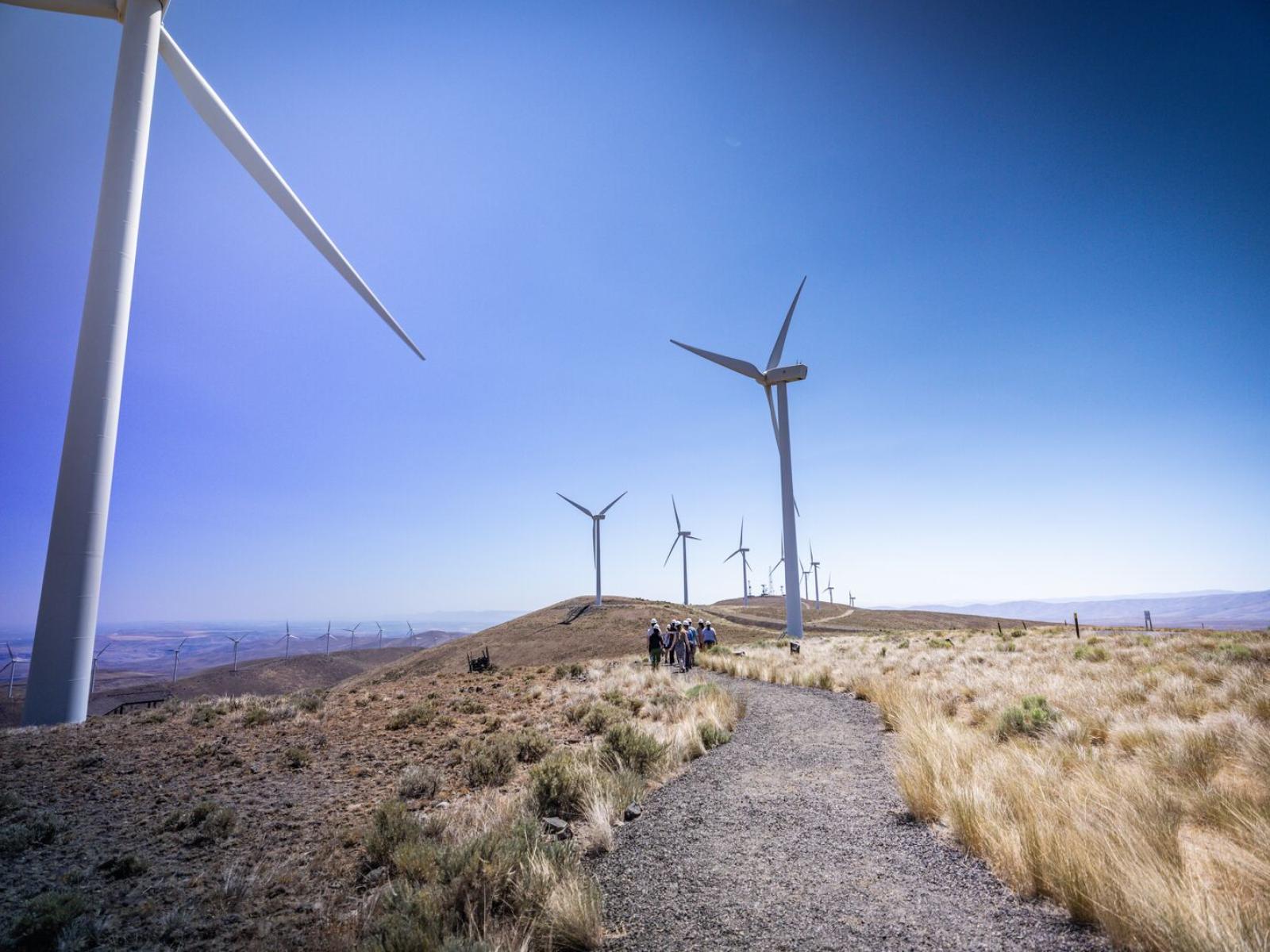PNNL Reveals its 2023 Highest-Impact Wind Energy Accomplishments
Research in fiscal year 2023 moves needle toward nation’s wind energy goals

Pacific Northwest National Laboratory researchers lead students on a wind farm tour as part of the 2023 Office of Science Reaching a New Energy Sciences Workforce (RENEW) initiative.
(Photo by Graham Bourque | Pacific Northwest National Laboratory)
Wind energy now represents more than 10 percent of the nation’s electricity mix, making it the largest source of renewable power generation in the United States. This energy source enables many states to meet their renewable energy goals—but implementing wind energy comes with challenges to be overcome, such as improving wind forecast accuracy and mitigating environmental risks associated with wind farm development.
Fiscal year 2023 (FY23) offered Pacific Northwest National Laboratory (PNNL) wind researchers a wealth of opportunity to address these challenges and expand support of various federal and state agency wind energy goals.
“Looking back at FY23, it’s clear that there are five key areas where PNNL wind research helped move the needle toward a low-cost, resilient wind energy future,” said PNNL Wind Energy Program Manager Alicia Mahon, who also manages PNNL’s Operational Systems Engineering group.
- Cost reduction: PNNL works to increase industry understanding of wind farm-atmosphere interactions and bring greater certainty to model parameters, which helps reduce risk for wind energy developers and thereby lowers associated costs. For example, PNNL managed a research buoy stationed offshore of O’ahu to collect wind resource, meteorological, and oceanographic data that will increase wind model certainty and reduce the cost of offshore wind energy off the coast of Hawai’i.
- Transmission planning: Through such efforts as the West Coast Offshore Wind Transmission Study, PNNL continues improving wind power transmission. Researchers evaluate potential pathways under various conditions and identify points of interconnection, thereby helping to integrate wind while minimizing upgrade investment and supporting grid resilience.
- Siting and permitting support: PNNL facilitates siting and permitting of new wind projects through research to better understand and mitigate potential environmental impacts. In FY23, PNNL advanced the state-of-the-art for technologies and resources to monitor wildlife behavior, including radar systems, radio frequency tags, and thermal vision solutions to track bird and bat flight patterns. One such technology, PNNL’s award-winning ThermalTracker-3D system, was licensed by a private company.
- Collaboration and stakeholder engagement: PNNL collaborates with industry and community members to implement innovative deployment methodologies while developing the domestic supply chain, reducing costs for wind generation, supporting local workforces, and minimizing environmental impacts. One FY23 example is PNNL’s work with PelaStar, which provides objective and quantified environmental, ocean co-use, and workforce impact analysis specific to PelaStar’s design and installation methodologies, as well as its operations and maintenance processes.
- Diversity, equity, inclusion, and accessibility: PNNL wind experts know that considering and incorporating diverse experiences and perspectives into their work improves the value and applicability of their research. They assess the potential impacts of their work and develop meaningful engagement strategies to assure equitable access to resulting information, tools, and benefits. PNNL’s FY23 efforts in this area include leading a Reaching a New Energy Science Workforce summer school program to engage students from American Indian and Indigenous backgrounds.
Read the full details of PNNL’s high-impact wind energy accomplishments in FY23 and learn more about PNNL’s wind energy capabilities.
Published: December 14, 2023